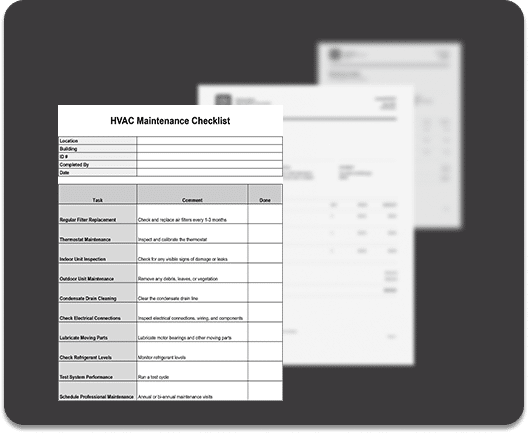More and more companies are offering English as a Second Language classes. Here are eight ways to create a caring culture in the workplace for nonnative English speakers.
Our country is filled with people whose skills, talents, and experiences are blocked by a language barrier. Immigrants, refugees, and other nonnative English speakers of all skill levels are too often overlooked or undervalued – limiting not only their potential for growth but also the growth potential of the companies that miss out on hiring and promoting them.
“Highly skilled immigrants … often encounter a labyrinth of obstacles when they try to find jobs in the U.S., frustrating not only their ambitions but also their earning potential as they settle for lower-skill positions.”
– Skilled immigrants often struggle to put degrees, credentials to use in U.S. | Chicago Tribune
Choosing to hire and support nonnative English speakers is a business decision. Lately, more companies are stepping up with English as a Second Language (ESL) classes and other tools and programs to invite nonnative English-speaking applicants to join their teams. Is your company still missing out? Here are eight ways you can create a caring culture in the workplace for nonnative English speakers. You’ll be glad you did!
1. Understand the Challenges of ESL Employees
Immigrants, refugees and other employees for whom English is a second language (ESL) face a range of hurdles at work, including these, from a London-based article on the subject:
- Language barrier. Difficulty clearly communicating what you mean or difficulty understanding the meaning of what others are saying.
- Cultural differences. Most language differences come with cultural differences, too, as individuals and families move outside their country or region of origin. Business protocols, interpersonal interaction styles, food preferences, fashions, and senses of humor vary widely around the globe.
- Not being taken seriously. Being identifiably foreign often means being taken less seriously than native colleagues in a professional context.
- Limited career progression. Too often, nonnative speakers experience limited mobility at work. Management roles, for example, heavily rely on communication. Language obstacles can get in the way of career advancement.
- Being treated differently, less than. Immigrants frequently report being overlooked or having their expertise minimized by colleagues and managers.
Whether through conscious or unconscious bias, nonnative English speakers are too often silenced at work.
2. Build an Inclusive, Caring Culture in Your Workplace
In recent years, there’s been an awakening among American employers who appreciate the value of diversity, equity, and inclusion in the workplace. Yet nonnative English speakers are rarely explicitly included in DEI initiatives.
When building programs of inclusivity, include education about the challenges faced by nonnative English colleagues and direct reports. Highlight the benefits of embracing the ideas, skills and experiences of all. And provide examples of how native English speakers can better welcome nonnative English speakers into conversations and opportunities at work.
Make it a cultural habit to remind ESL speakers that it’s their workplace, too. Invite them to ask questions, learn, join activities, speak up, and, sometimes, just listen and be present.
By living your commitment of inclusion, all employees will feel that you are building the caring culture they’re looking for. And they’ll be more loyal, engaged, and willing to stay, too.
3. Offer ESL Learning
Companies such as Amazon, Tyson Foods, Intel, and Dell Technologies are offering ESL classes and programs to their employees, citing benefits such as:
- Greater diversity of ideas, skills, and talents
- Access to an expanded talent pool from which to fill open positions
- Improved employee retention
Citing multiple research reports, this SHRM article emphasizes, “The research found that workplace English classes do more than attract non-English-speaking immigrants who are eager to expand their language skills. They benefit businesses because improved English proficiency correlates with increased employee engagement and retention.”
4. Encourage Native English-Speaking Role Models and Ambassadors
It’s not enough for nonnative English speakers to learn the language. As this NPR article points out, “Decades of research show that when a native English speaker enters a conversation among nonnative speakers, understanding goes down.”
Set an expectation that native and nonnative English-speaking managers will become role models for inclusivity. For example, to ensure that an ESL voice or opinion isn’t overlooked, have managers call on the quieter individuals in a group and invite them to chime in before moving the conversation forward.
Encourage native English speakers to be mentors or ambassadors. If you have leaders who speak multiple languages, encourage them to be actively involved as the company becomes more welcoming of nonnative English speakers.
To improve communications with nonnative English colleagues, this community college blog suggests:
- Speaking slowly and clearly (without mumbling) can do a lot for people who speak multiple languages.
- Using visual aids
- Never use a big, jargon-y word where a smaller, clearer word will do.
- In workplace contexts, aim not to emphasize specific cultural or religious traditions, like Christmas, that may or may not apply to all members of your audience. Communicate about things that everyone can share. Many people have winter or end-of-year celebrations rather than a Christmas party, broadening the holiday observance to include different cultural and religious backgrounds.
- Simple modifications like asking questions or clarifying can help everyone, including English learners.
5. Reward Skill Development
Of course, we believe that a focus on skills and competencies is a great equalizer at work. To improve workplace opportunities for limited English-speaking workers, keep a focus on skill development and competency mastery. Skills assessments can be used to evaluate job skills and measure progress over time – without the biases so often attached to language skills.
When doing the assessments and delivering learning opportunities, look for ways to include videos and other visuals, so written words aren’t getting in the way of job skill development as the employee is building English language skills.
Use skills and competency metrics to support performance evaluations, learning and development paths, and promotion opportunities.
6. Support Social Networking
Build your company social events and networking calendar with immigrants, refugees, and nonnative speakers in mind.
- Be broadly inclusive of celebrating cultural holidays
- Create spaces for people to connect with native English speakers and bilingual colleagues – opportunities for people to practice their new language or to enjoy the ease of speaking in their own native language
- Keep presentations and entertainment as visual as possible, for the broadest understanding
- Go for culturally diverse menus – at each event and/or across events
7. Tackle Workforce Discrimination Support Social Networking
Create company policies and practices that show respect and caring for all employees. Then, lead with this “respect-and-caring-first” approach in all you do. Address disparaging remarks, bullying, excluding behaviors, and other disrespectful behaviors quickly and decisively.
8. Actively Recruit Immigrants, Refugees, and Nonnative English Speakers
Once you have the foundation of a welcoming culture in place, go out of your way to recruit immigrants, refugees, and nonnative English speakers. To hire for potential language learning:
- Post jobs in multiple languages and in media that will reach a culturally diverse talent pool
- Offer translation services as part of the application and interview process
- Emphasize mentorship programs – ideally with bilingual mentors
- Highlight your ESL classes and any other programs that are especially welcoming to nonnative English speaking applicants
- Showcase a diversity of employees and managers who are proud to help represent the success of your DEI initiatives and welcoming culture
When you minimize the English language as an employment barrier, you’ll provide a better path to career advancement and social connection at work. And the caring culture you create will benefit your entire workforce.
Are you working to create a caring culture in the workplace? Download our Competency Management Toolkit to understand how a competency-based approach can help you expand your talent pool, broaden the diversity of your workforce, and create the culture you’re striving for.
RELATED RESOURCES
What You Can Do to Combat Racism at Work
How Competencies Can Help You Overcome the Halo Effect in the Workplace
World Events Taking Their Toll: How to Help Your Employees Through (Another) Crisis
First-generation professionals: What can you do to ensure they succeed?


















